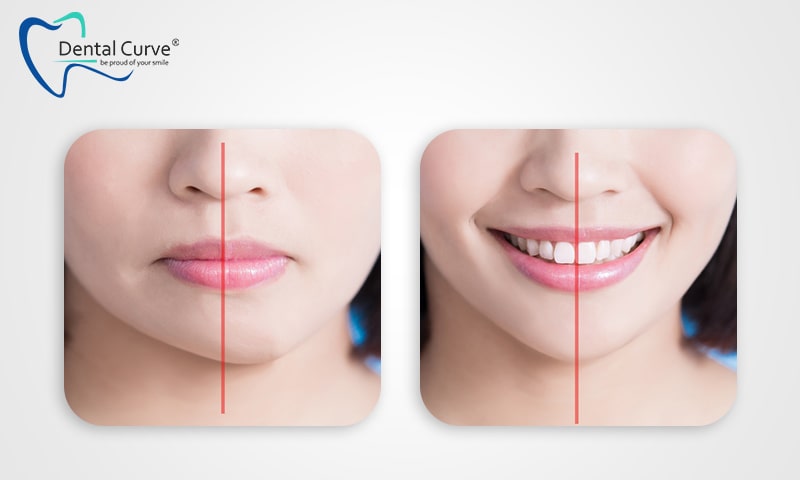Introduction to Invisalign
Are you curious about correcting your smile with Invisalign? This innovative orthodontic treatment has garnered attention for its clear aligners and discreet approach to teeth straightening. But a question lingers in the minds of many: does Invisalign change your jaw? As more people seek effective solutions for dental misalignment, understanding how these aligners work and their impact on jaw structure is essential. Join us as we delve into the details of Invisalign, exploring its effects on jaw alignment and what it means for your overall oral health!
How Invisalign Works
Invisalign is an innovative orthodontic treatment designed to straighten teeth using a series of custom-made clear aligners. Each set of aligners is crafted from high-quality, flexible plastic that fits snugly over your teeth.
The process begins with a consultation where your dentist or orthodontist maps out a personalized treatment plan. They use 3D imaging technology to create precise models of your mouth, allowing for detailed planning.
Once the initial setup is complete, you receive several sets of aligners. You wear each set for about one to two weeks before switching to the next in the series. This gradual movement shifts your teeth into their desired positions gently and effectively.
Throughout this journey, regular check-ins with your provider ensure everything progresses as planned. The discreet nature of Invisalign allows you to maintain confidence while transforming your smile without traditional metal braces.
Effects of Invisalign on Jaw Alignment
Invisalign is designed to shift teeth into a more aligned position, which can indirectly influence jaw alignment. As the aligners gently push on your teeth, they also apply subtle pressure to the surrounding bone and soft tissues.
This process encourages the jaw to adjust over time. For some individuals, this means improving bite issues or alleviating discomfort from misalignment.
Patients with a crossbite or overbite may notice significant changes as their teeth move into proper positions. This realignment can lead to better jaw function and less strain on the temporomandibular joint (TMJ).
However, each person’s experience varies based on their unique dental structure and treatment plan. Regular check-ups with your orthodontist will monitor these changes closely throughout your Invisalign journey.
Benefits of Invisalign for Jaw Changes
Invisalign offers several advantages for individuals seeking jaw alignment improvements. One primary benefit is the gradual shift of teeth into their ideal positions, which can positively influence jaw alignment over time.
The clear aligners are designed to fit snugly and apply gentle pressure. This allows for controlled movement, minimizing discomfort while promoting a more balanced bite. Many users experience improved functionality in chewing and speaking as their jaws realign.
Another appealing aspect is the aesthetic advantage. Unlike traditional braces, Invisalign’s transparent design makes treatment discreet, allowing patients to smile confidently throughout the process.
Additionally, since the aligners are removable, maintaining oral hygiene becomes easier compared to fixed braces. Patients can brush and floss without obstruction, leading to healthier gums and teeth during treatment.
Regular check-ins with an orthodontist ensure that progress is monitored closely. Adjustments can be made if necessary to optimize jaw positioning effectively throughout the journey.
Potential Risks and Side Effects
While Invisalign offers many benefits, it’s important to be aware of potential risks and side effects. Some users may experience discomfort or pressure during the initial adjustment periods. This sensation typically fades as your teeth begin to shift.
Another common issue is increased salivation or dry mouth. Your body might react differently as you adjust to wearing aligners throughout the day and night.
In some cases, patients report minor speech changes, particularly in the early days of treatment. This usually resolves itself once they become accustomed to speaking with their aligners in place.
It’s also worth noting that improper use or neglecting proper oral hygiene can lead to cavities or gum issues. Regular dental check-ups are essential during your journey with Invisalign to monitor any complications that may arise along the way.
Alternatives to Invisalign
When considering alternatives to Invisalign, traditional braces stand out. They use metal brackets and wires to gradually shift teeth into place. This method is highly effective for complex dental issues.
Another option is clear ceramic braces. They function similarly to metal braces but blend more seamlessly with your smile due to their tooth-colored materials.
For those looking for a quicker fix, instant orthodontics might be appealing. Veneers can dramatically alter the appearance of your teeth without aligning them underneath.
Additionally, some people explore at-home aligner kits. Brands like SmileDirectClub offer affordability and convenience but may lack professional oversight.
Retainers serve as another avenue for minor adjustments or stabilization after treatment has concluded. Each alternative comes with its own set of benefits and considerations worth weighing before making a decision.
Conclusion: Considerations before Choosing Invisalign for Jaw Changes
Choosing Invisalign for jaw changes is a significant decision. It’s essential to weigh the benefits against any potential risks. While many patients experience improvements in jaw alignment and overall oral health, not everyone will achieve the same results.
Consulting with an orthodontist or dental professional can provide insights tailored to your specific situation. They can assess your unique needs and guide you through the process, helping set realistic expectations.
Consider discussing alternative treatments if you’re uncertain about Invisalign. Options like traditional braces or other orthodontic solutions may suit certain individuals better.
Understanding how Invisalign works and its effects on jaw alignment will empower you to make an informed choice for a healthier smile.


